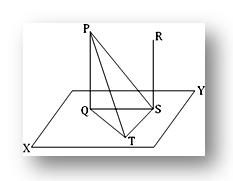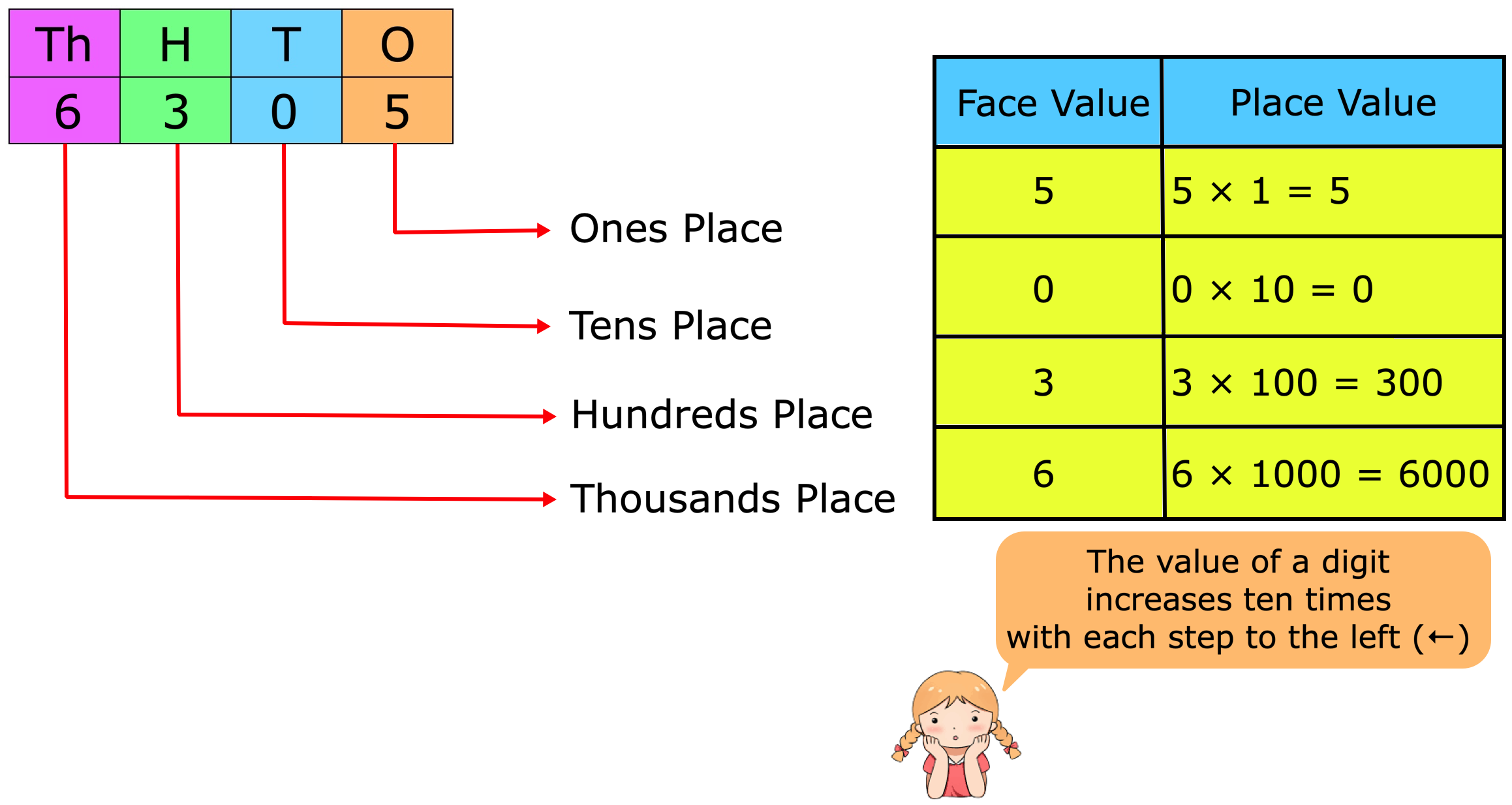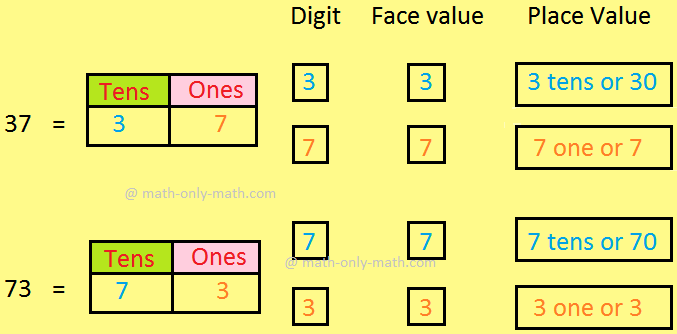Theorem on Parallel Lines and Plane
Theorem on parallel lines and plane are explained step-by-step along with the converse of the theorem.
Theorem: If two straight lines are parallel and if one of them is perpendicular to a plane, then the other is also perpendicular to the same plane.
Let PQ and RS be two parallel straight lines of which PQ is perpendicular to the plane XY. We are to prove that the straight line RS is also perpendicular to the plane XY.
Construction: Let us assume straight line PQ and RS intersect the plane XY at Q and S respectively. Join QS. Evidently, QS lies in the XY plane. Now, through S draw ST perpendicular to QS in the XY plane. Then, join QT, PT and PS.
Proof: By construction, ST is perpendicular to QS. Therefore, from the right-angled triangle QST we get,
QT² = QS² + ST² ………………(1)
Since PQ is perpendicular to the plane XY at Q and the straight lines QS and QT lie in the same plane, therefore PQ is perpendicular to both the lines QS and QT. Therefore, from the right-angle PQS We get,
PS ² = PQ ² + QS ² ………………(2)
And from the right-angle PQT we get,
PT² = PQ² + QT² = PQ² + QS² + ST² [using (1)]
or, PT² = PS² + ST² [using (2)]
Therefore, ∠PST = 1 right angle. i.e., ST is perpendicular to PS. But by construction, ST is perpendicular to QT.
Thus, ST is perpendicular to both PS and QS at S.
Therefore, ST is perpendicular to the plane PQS, containing the lines PS and QS.
Now, S lies in the plane PQS and RS is parallel to PQ; hence, RS lies in the plane of PQ and PS i.e., in the plane PQS. Since ST is perpendicular to the plane PQS at S and RS lies in this plane, hence ST is perpendicular to RS i.e., RS is perpendicular to ST.
Again, PQ and RS are parallel and ∠PQS = 1 right angle.
Therefore, ∠RSQ = 1 right angle i.e., RS is perpendicular to QS. Therefore, RS is perpendicular to both QS and ST at S; hence, RS is perpendicular to the plane containing QS and ST i.e., perpendicular to the XY.
Converse of the theorem on parallel lines and plane:
If two straight line are both perpendicular to a plane then they are parallel.
Let two straight lines PQ and RS be both perpendicular to the plane XY. We are to prove that the lines PQ and RS are parallel.
Following the same construction as in theorem on parallel lines and plane, it can be proved that ST is perpendicular to PS. Since, RS is perpendicular to the plane XY, hence RS is perpendicular to TS, a line through S in the plane XY i.e., TS is perpendicular to RS. Again, by construction, TS is perpendicular QS. Therefore, TS is perpendicular to each of the straight lines QS, PS and RS at S. hence, QS, PS and RS are co-planar (by theorem on co-planar). Again, PQ, QS and PS are co-planar (Since they lie in the plane of the triangle PQS). Thus, PQ and RS both lie in the plane of PS and QS i.e., PQ and RS are co-planar.
Again, by hypothesis,
∠PQS = 1 right angle and ∠RSQ = 1 right angle.
Therefore, ∠PQS + ∠RSQ = 1 right angle + 1 right angle = 2 right angles.
Therefore, PQ is parallel to RS.
● Geometry
- Solid Geometry
- Worksheet on Solid Geometry
- Theorems on Solid Geometry
- Theorems on Straight Lines and Plane
- Theorem on Co-planar
- Theorem on Parallel Lines and Plane
- Theorem of Three Perpendiculars
- Worksheet on Theorems of Solid Geometry
11 and 12 Grade Math
From Theorem on Parallel Lines and Plane to HOPME PAGE
Recent Articles
-
Place Value and Face Value | Place and Face Value of Larger Number
Apr 13, 25 03:12 PM
The place value of a digit in a number is the value it holds to be at the place in the number. We know about the place value and face value of a digit and we will learn about it in details. We know th… -
Face Value and Place Value|Difference Between Place Value & Face Value
Apr 13, 25 03:07 PM
What is the difference between face value and place value of digits? Before we proceed to face value and place value let us recall the expanded form of a number. The face value of a digit is the digit… -
Place Value and Face Value | Basic Concept on Place Value | Face Value
Apr 13, 25 02:59 PM
Learn the easiest way to understand the basic concept on place value and face value in the second grade. Suppose we write a number in figures 435 in words we write four hundred thirty five. -
Expressing Place Value and Face Value | International & Indian System
Apr 13, 25 02:35 PM
We will learn expressing place value and face value of a digit in any number in International and Indian system. Place value: We know how to find out the place value of a digit in any number. -
5th Grade Decimals | Word Problem on Decimals | Concept of Decimals
Apr 13, 25 02:16 PM
A fractional number whose denominator is 10 or multiple of 10 is called a decimal. Every decimal has two parts whole number part and decimal part. These two parts are separated by a dot or point. This…






New! Comments
Have your say about what you just read! Leave me a comment in the box below. Ask a Question or Answer a Question.